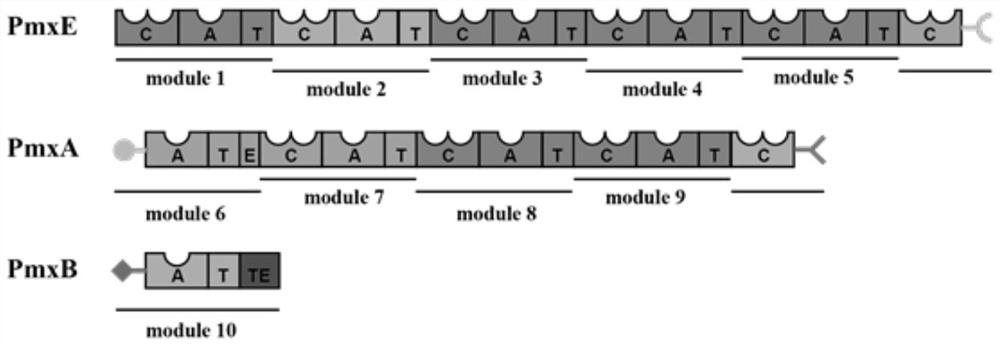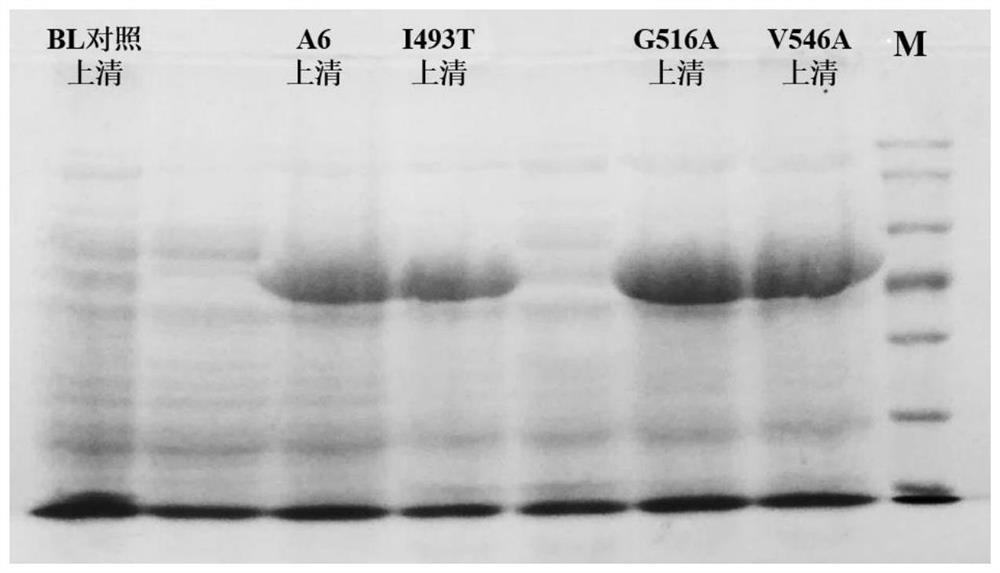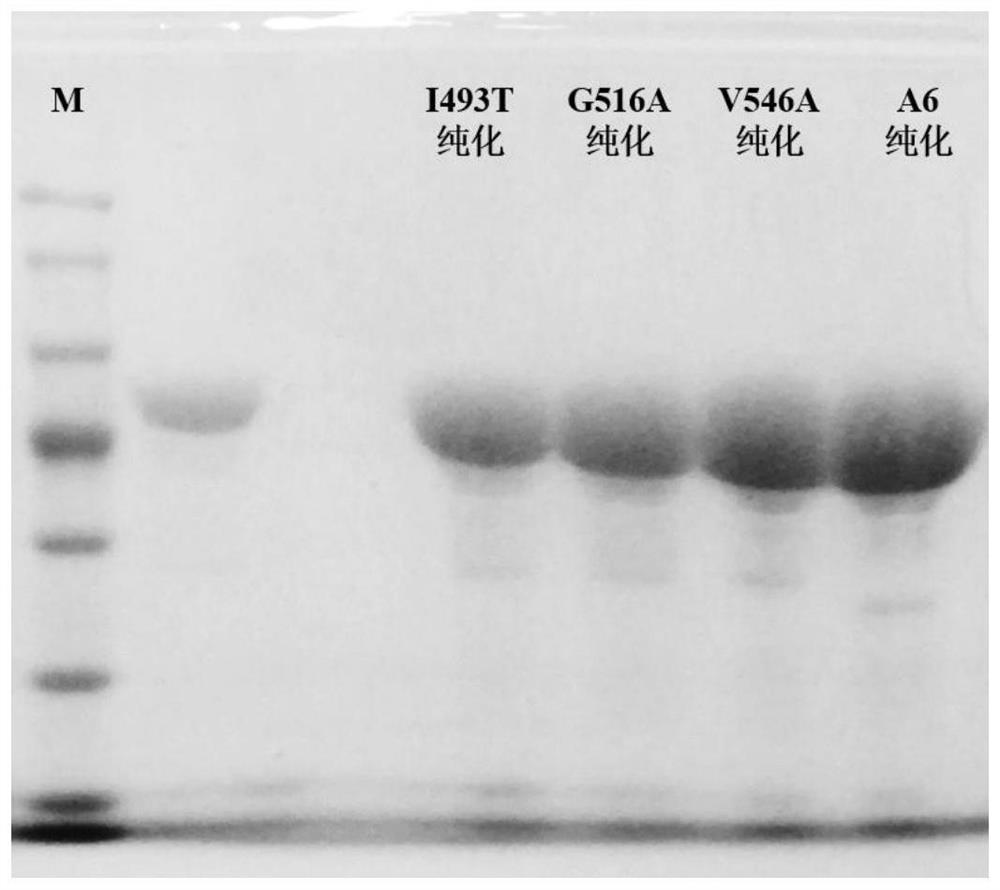Adenylation protein A6 mutant as well as coding gene and application thereof
A technology for adenylylating proteins and coding genes, which is applied in the field of catalytic synthesis of polymyxins, to achieve the effect of improving activity
- Summary
- Abstract
- Description
- Claims
- Application Information
AI Technical Summary
Problems solved by technology
Method used
Image
Examples
Embodiment 1
[0047] Example 1: Construction of Unmatched Adenosine Acid Protein A6 Expression Plasmid
[0048] (1) The total genome (CICC 21777) total genome preserved in laboratory is a template, and the upper and lower proders F / R with PET-28A (+) recombinant homologous fragments are designed for PCR amplification, PCR product. Use 1%
[0049] Agarose gel electrophoresis test. The purpose of the drug was detected after a discovery product was used to recover the segment of the agent.
[0050] F: ctttaagaaggagatataatgctttgaaaaagaaacg
[0051] R: ctcgagTGCGCCGCAAGCCGCGGCTTCATGCGGGGAGC
[0052] (2) Excipient expression plasmid PET-28A (+), use NCO I and ECOR I bisase to recover the spare.
[0053] (3) The above-mentioned recovery alternate carrier and fragment were recombined with a SOSOO kit and transferred into E. coli DH5α sensitive cells to obtain recombinant expression plasmid PET-28A + A6 clonal strains.
Embodiment 2
[0054] Example 2: By sequence alignment prediction key amino acid residues
[0055] To predict the key residue associated with adenproprin and the substrate binding pocket, 5 of the five types of GRSA, SLGN1, CMIS6, IDNL1 and DLTA have been downloaded by NCBI, and the amino acid sequence of the protein structure and the active site of the active site has been downloaded. Their PBD numbers are 1 amu, 4gr5, 5jjp, 5jjq, 3dHV. These amino acid sequences and amino acid sequences of A6 in Example 1 and the amino acid sequence (GenBank: JN660148.1) of adenprory domain B-A6 in the amino acid sequence (GenBank: JN660148.1) encoding a polymyxin B biosynthesis gene cluster module 6 For the preliminary screening, the key residue may be related to the specificity of the Module A domain as shown in Table 1.
[0056] Table 1: Results of the predicted active site by multi-sequence alignment
[0057]
[0058] Conclusion: Adenosine acylated protein A6 (SEQ ID NO.1) and online reported adenosine a...
Embodiment 3
[0059] Example 3: Construction of adenylated protein mutant expression plasmid
[0060] (1) The PET-28A + A6 expression plasmid constructed in Example 1 was a template, and the fixed-point mutant primers I493T-F / R, V514I-F / R, G516A-F / R, V546A-F / R were designed. To the PCR. The specific fixed point mutant primers are as follows (underscore mutant sites):
[0061] I493T-F: a G Tcgccccgtaatcgcat
[0062] I493T-R: atgcgattacggcgggcga C TTTGCCCCCAACGTACAG
[0063] V514i-f: TA T Gagcttcgttaagctgg
[0064] V514i-r:
[0065] CCAGCTTAACGAAGCTC A TaacgggaggctctGcgggg
[0066] G516A-F: T G CCGTTACGAGCTTCGTTA
[0067] G516A-R:
[0068] Taacgaagctcgtaacgg C Aggctctgcgggtatcggg
[0069] V546A-F: a G Caatcgaagcttcgggtag
[0070] V546A-R:
[0071] CTACCGAAGCTTCGATTG C Tacgccttgggatgccc
[0072] (2) The PCR product was tested with 1% agarose gel electrophoresis. The DPN I enzyme digestion template was detected after the purpose of the discovery was detected, and the segment of the kit was ...
PUM
 Login to View More
Login to View More Abstract
Description
Claims
Application Information
 Login to View More
Login to View More - Generate Ideas
- Intellectual Property
- Life Sciences
- Materials
- Tech Scout
- Unparalleled Data Quality
- Higher Quality Content
- 60% Fewer Hallucinations
Browse by: Latest US Patents, China's latest patents, Technical Efficacy Thesaurus, Application Domain, Technology Topic, Popular Technical Reports.
© 2025 PatSnap. All rights reserved.Legal|Privacy policy|Modern Slavery Act Transparency Statement|Sitemap|About US| Contact US: help@patsnap.com



